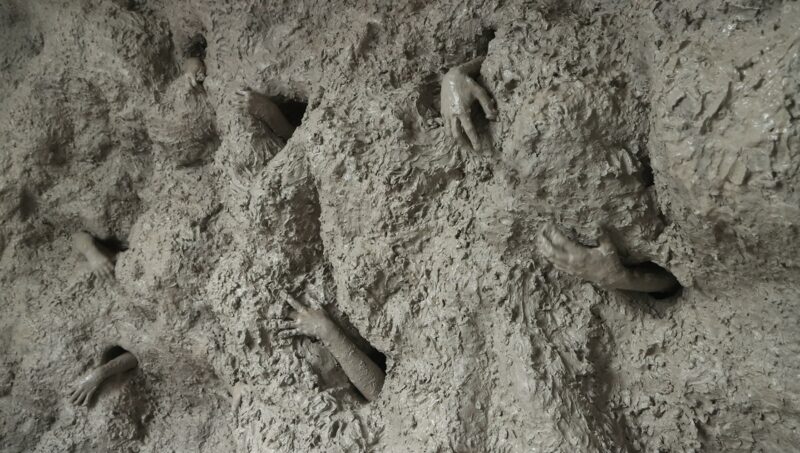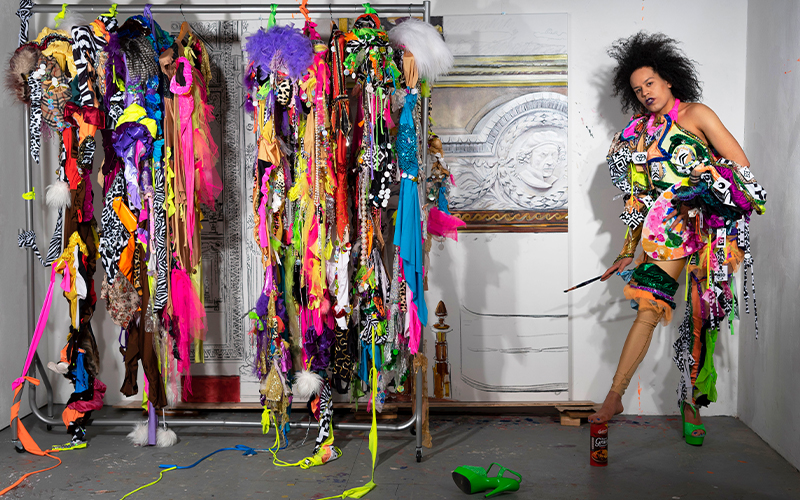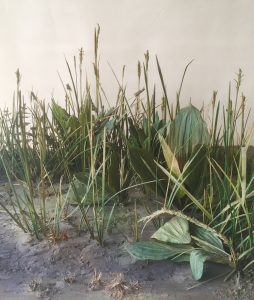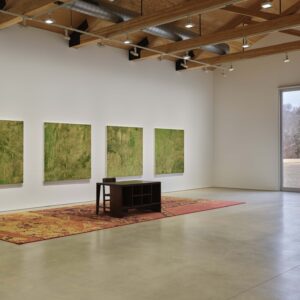William Cobbing is currently showing his works that combine sculpture, performance and film at Messums West in their impressive space in a restored 13th-century barn. I spoke to him about his work and showing in such an impressive space.
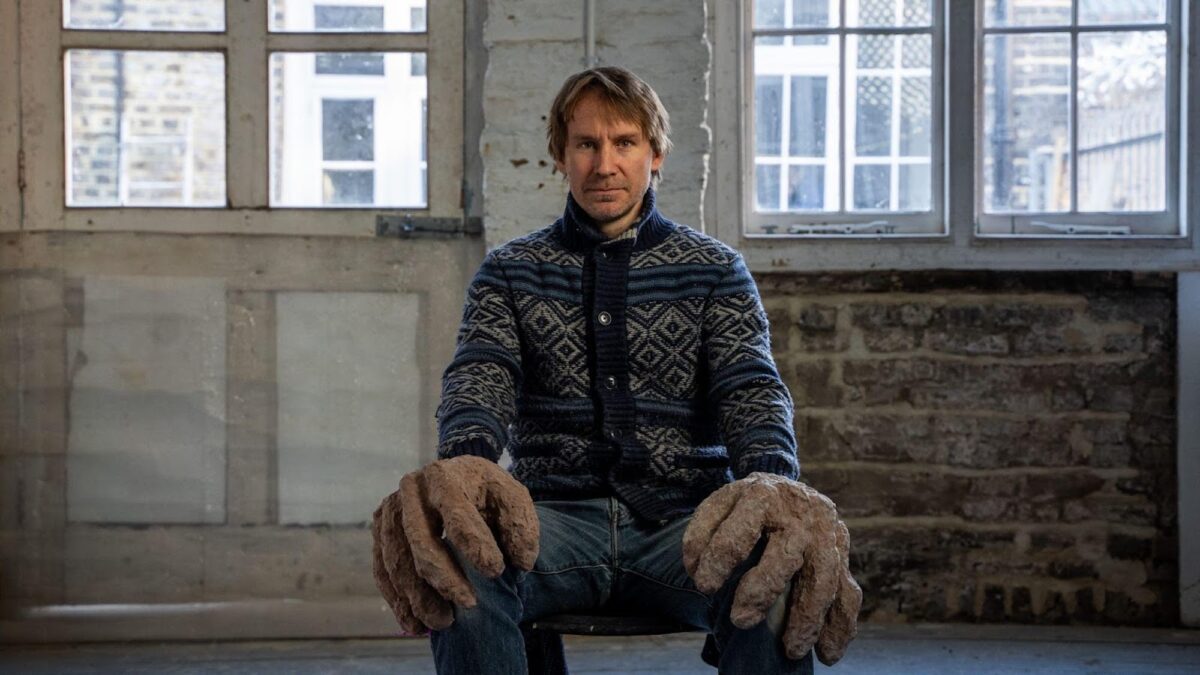
How would you introduce your work to someone who is new to it?
My work is a collision of video and clay, immersing the viewer within the experiences that I’ve created. I want the viewer to be aware of the squelching nature of clay, for it to feel visceral and also slapstick. I want it to feel like you’ve leapt from a high diving board into a swimming pool filled with clay.
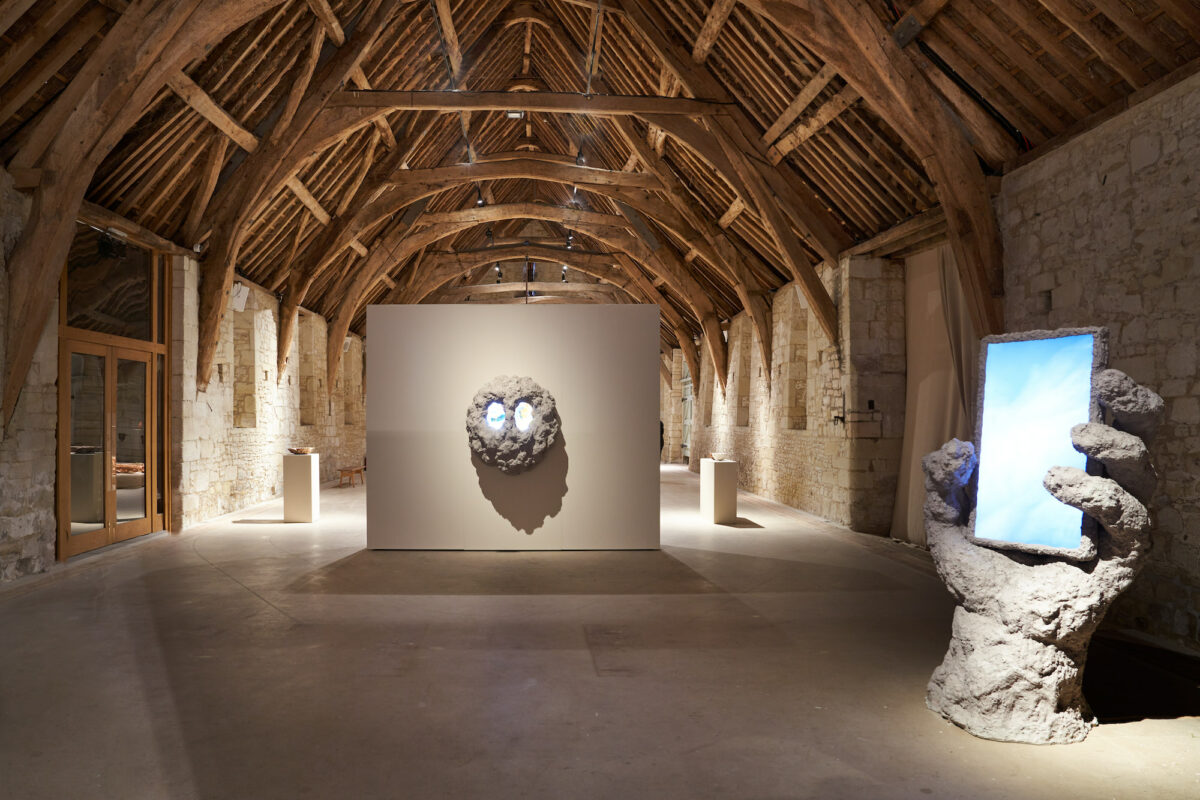
Can you talk us through one of the works in this show?
‘Obsidian tomb’ where a giant clay hand holds on to an oversized mobile phone (pictured below) reflects the fact that since the pandemic I’m aware that people often only see my videos on Instagram and that in the last 15 years iPhone use has been growing exponentially.
I want, as much as possible, to convey the ASMR embodied idea of clay through a screen as well. I like the idea that you could reach into the phone with your hand and pick out a bit of clay.
Where does the inspiration for using oversized body parts in your work come from?
Featuring body parts is somewhat autobiographical as I spend a lot of time making things using my hands in the studio and I’m surrounded by clay. By having oversized hands and oversized heads, it gives them a slightly goofy feel and a lot of my artist heroes also used oversized body elements – such as Paul McCarthy, Huma Bhabha, Franz West and Philip Guston. My works are partly friendly and a bit cartoony but they do make some people uncomfortable and queasy. I’m always surprised by the spectrum of reactions – some people will see the works as funny and some people really hate them.
Do you see these works as humorous pieces and is that the primary reaction to them?
Humour is so subjective and some people respond to the work with laughter but I’ve also had a lot of feedback from those who find them a bit scary and a bit funny. For my work Terra Cave, where a tall person has to duck under to see the screen but it’s a little too high for children to view, I’ve got some nice photos of children standing on schools to look inside.
Kids really react strongly to my work as we have an intuitive link with clay, and it feels like the older we get the further away from it we become. At the other end of the spectrum in one performance at the Barbican where I was coated in clay and dragged across the stage, an elderly lady in the audience who probably came to see some classical music said she was disgusted by it. She apparently had quite a visceral anger towards the work, and I do want to play with the idea of attraction and repulsion in my work.
What element came first, the clay, the videos or the performative elements? And how did they evolve together?
I trained in sculpture and so that was my primary focus at Central Saint Martins – the ceramic objects I made at the time were kind of gloopy and that element can still be seen in my current works.
I then did my masters in Amsterdam and that’s when I first experimented with video but even then I didn’t think of myself as a performer, performance artist or video artist. I must have filed that filmic element away in my head like a guilty secret that I kept hidden until I felt I could finally incorporate it into my work many years later.
It’s only relatively recently, in the last 10 years, that I’ve started working with unfired clay – though I also still create ceramic works as well.

You can also hear dripping sounds from your works echoing through the space. How important is the sound as part of experiencing your work?
I’m glad you brought up the sound, it’s super important. I want the viewer to be enveloped by clay and sound is a part of that – when you see the performers in one of my works I want viewers to experience the shaping of clay without looking at the film.
The sound you hear is the sound of clay when it gets wet, gooey and sticky – it’s the sound of clay being squelched between fingertips. Clay has so many amazing sounds, after all ceramic is used to make musical instruments and so it has a great resonance.
I’ve also introduced louder sharper sounds such as a rock hitting a glazed ceramic face, and the dripping splurging sound of a wire cutter slicing through clay – all of these echo and create an overlap of sounds into a soundscape.
So when you’re closer to one sculpture the sound from that piece is louder and you’re hearing the sounds from other works as background noise. I wanted to provide the sense of what it feels like to be enveloped in clay with a sensory overload, and sound is an important part of that.

How does it feel to show your work in an impressive 13th-century barn space and how do your works respond to it?
It’s very different from a white gallery space – it’s such an amazing space full of atmosphere, drama, heft and width with ancient stone walls and a high ceiling with a beautiful wooden framework. I know a couple of artists like Linda Sormin and Christie Brown who have shown here, so I’ve seen documentation of this space, and so I’ve had my eye on it in terms of showing here. It reminds me a bit of the Arsenale in Venice, another space that I love.
It’s such an earthy space and you feel the weight of it, it’s almost cathedral-like. It has such a material feel and so do my works, and that leads to my pieces having a good conversation with the space.
William Cobbing’s works are part of the group sculpture show ‘On the Earth’ at Messums West. The venue is also hosting the excellent ceramics exhibition Contem’Plate. Both are on until 29th April and are free to visit.
William Cobbing profile photo: Doug Gillen.

